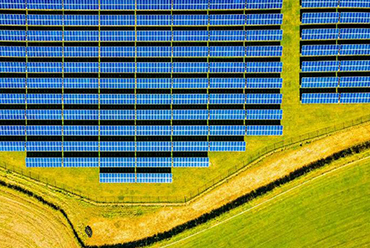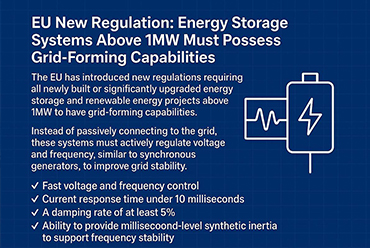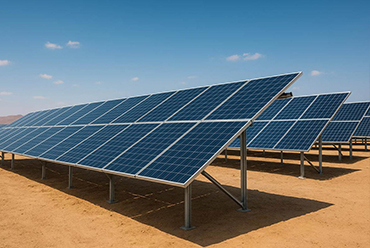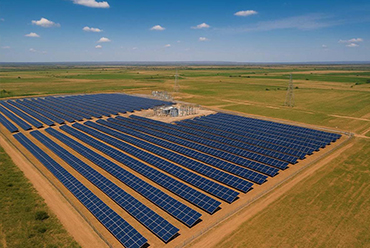
On December 1, the World Bank announced a $6 billion investment to develop the South Johor Renewable Energy Corridor project in Malaysia. The project, with a capacity of 4 GW/5.12 GWh, is being advanced by the International Finance Corporation, Johor’s investment agency PDT, and local energy company Ditrolic Energy. It marks a key milestone in implementing the ASEAN Power Grid initiative. The project plans to deploy large-scale solar and energy storage facilities across an area of approximately 2,000 square kilometers in Johor, focusing on solar resources in the Kota Tinggi and Mersing regions. As a core energy component of the Johor-Singapore Special Economic Zone master plan, the project is set to become a top-tier clean power production hub in Southeast Asia, supplying electricity directly via cross-border transmission systems to power-strapped Singapore. According to data from Singapore’s Energy Market Authority, the country plans to import 6 GW of low-carbon electricity by 2035, accounting for one-third of its energy demand at that time. An IFC representative stated that the project’s low-cost renewable electricity will meet both local business needs in Johor and the energy demands of regional hyperscale data centers and manufacturing industries. This aligns with Johor’s call for high-efficiency energy solutions following its suspension of low-efficiency data centers. As a core node of the ASEAN Power Grid initiative, this project resonates with the recent ASEAN Grid Financing Initiative jointly launched by the Asian Development Bank and the World Bank. Current cross-border interconnection capacity in ASEAN stands at 7.7 GW and is planned to double by 2040, with the South Johor Corridor providing critical support toward this goal. CEO of Ditrolic Energy, Tan Chee Aun, noted that Johor-based enterprises will leverage this corridor to strengthen their clean energy export capabilities, laying a solid foundation for low-carbon transformation in regional industries. Industry analysis suggests that the project’s integrated solar-plus-storage model effectively addresses the intermittency challenges of renewable energy. It not only supports Malaysia’s goal of increasing renewable energy generation by 2030 but also offers Singapore a new pathway for diversifying its energy imports. As the project progresses, regional energy cooperation in Southeast Asia is entering a substantive phase, providing a key demonstration for ASEAN’s $764 billion grid construction plan.
Read More
Recently, Recurrent Energy, a subsidiary of Canadian Solar Inc., announced the completion of the sale of the Gunning Energy Park project in New South Wales, Australia. The buyer, an undisclosed European infrastructure investment group, and the transaction amount were not publicly disclosed. The Gunning Energy Park comprises a 275 MW solar power facility paired with a 120 MW battery energy storage system. Located near the town of Gunning, approximately an hour’s drive north of Canberra, the project is planned to connect to Australia’s National Electricity Market via Transgrid’s transmission lines. Once operational, it will generate sufficient clean electricity annually to power more than 76,000 households, providing significant support for the local energy transition.
Read More
The European Union has introduced new regulations requiring all newly built or significantly upgraded energy storage and renewable energy projects above 1MW to possess Grid-Forming capabilities. This represents a major transition from passive grid connection to active participation in maintaining Grid Stability. These systems will operate similarly to synchronous generators by autonomously regulating voltage and frequency, helping to ensure a reliable and resilient power system as renewable penetration continues to grow. According to the Phase II technical report released by ENTSO-E, grid-forming energy storage systems must meet several essential technical requirements. They must maintain voltage stability during frequency or phase fluctuations, provide rapid reactive current, and remain synchronized without external references. In terms of performance, the systems are required to achieve response times of less than 10 milliseconds and a power oscillation damping rate of at least 5%. In addition, they must supply millisecond-level Synthetic Inertia, comparable to a virtual synchronous machine, to effectively support frequency control and minimize the impact of sudden grid disturbances. These systems also need to pass strict disturbance tolerance tests, including voltage dips, step changes, and phase angle jumps, to confirm stable operation under challenging conditions. The NC RfG 2.0 regulation is expected to be finalized in 2026, followed by a typical transition period of around three years. Consequently, most projects will need to comply fully by 2028–2029. Developers should therefore begin upgrading control systems, PCS technology, and testing solutions to ensure readiness and long-term compliance.
Read More
Egypt’s Ministry of Electricity and Renewable Energy, the Egyptian Electricity Transmission Company, and a consortium led by Infinity Power and Hassan Allam Utilities Energy Platform have signed an agreement to develop solar power projects totaling 1.2GW, supported by a 720MWh battery energy storage system. The project will be implemented in two phases across different regions. Phase one includes the construction of a 200MW solar power plant with 120MWh of storage at the Benban Solar Park in Aswan, with commercial operation expected to begin in Q3 2026. As one of the world’s largest solar parks, Benban already hosts multiple photovoltaic projects, and the new facility will further strengthen its role as a key regional renewable energy hub. Phase two will see the development of a 1GW solar plant in Minya Governorate, paired with 600MWh of storage capacity, with grid connection targeted for Q3 2027. Egypt’s Minister of Electricity, Mahmoud Esmat, highlighted that the large-scale storage systems will enhance grid stability and improve peak shaving, supporting the integration of renewable energy. The project aligns with Egypt’s clean energy strategy, supported by increased government investment of USD 2.8 billion for the 2025–26 fiscal year. Once completed, it will contribute significantly to Egypt’s targets of reaching 42% renewable energy by 2030 and 65% by 2040.
Read More
October 28 (Local Time), South Africa — The 240MW PV2 Solar Power Plant, currently the largest single-site solar project in South Africa, has officially been energized. The project marks a significant step toward enhancing the country’s clean energy supply and improving grid stability. Located in the Northern Cape Province on the Mooiplaats Farm, the project scope includes construction of a 240MW photovoltaic plant, a step-up substation, a switching station, and an 11.3-kilometer transmission line connecting the switching station to the Koruson main substation. Once fully operational, the plant is expected to deliver 360 million kWh of green electricity annually, helping alleviate national power shortages and accelerating South Africa’s transition toward a cleaner and more sustainable energy structure. UISOLAR congratulates all partners involved in this milestone and remains dedicated to supporting global renewable energy development with reliable solar mounting solutions.
Read More
China Energy Engineering Corporation Ltd. (CEEC) has successfully completed the transaction for its first renewable energy investment in Brazil — the Coremas Photovoltaic Project. CEEC Overseas Investment Co., Ltd. is now the controlling shareholder and will oversee the operation and management of the project. This marks a significant milestone for CEEC’s expansion in the South American renewable energy market, bringing new momentum to China–Brazil cooperation in clean energy. Located in Paraíba State, northeastern Brazil, the Coremas PV Project has a total installed capacity of 93 MW and an annual generation of 167 million kWh — enough to power over 80,000 households each year, reducing about 20,500 tons of standard coal and cutting carbon emissions significantly. The project has also created nearly 100 local jobs, boosting the regional economy and improving community livelihoods. Going forward, CEEC Overseas Investment will enhance the project’s operation and maintenance, upgrade system performance, and build the Coremas PV Project into a benchmark solar project in South America. Guided by CEEC’s “Four New” strategy, the company will strengthen cooperation with local governments, industry leaders, and financial institutions to advance clean energy and sustainable development in the region. Summary CEEC has completed its first renewable energy investment project in South America — the 93 MW Coremas PV Project in Brazil, marking a major step in China–Brazil green energy cooperation.
Read More online service
online service +86 (0592)5663849
+86 (0592)5663849 sales@uisolar.com
sales@uisolar.com solar-mount.au
solar-mount.au